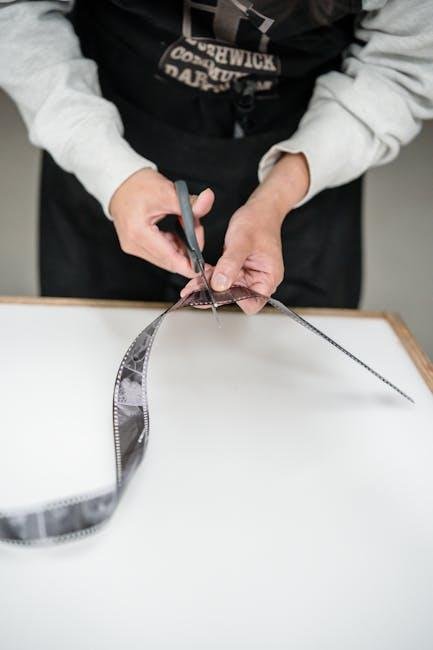Hey there, curious minds! Gene editing used to be the stuff of sci-fi movies and high-tech labs, but today, DIY gene editing is sparking excitement—and controversy—in backyards and home garages around the world. From hobbyists tinkering with CRISPR kits to passionate biohackers pushing boundaries, this do-it-yourself revolution is opening up thrilling possibilities while raising important questions about safety, ethics, and regulation. In this post, we’ll dive into the buzz surrounding DIY gene editing, explore the backlash it’s facing, and help you get a clear picture of what this cutting-edge trend really means for all of us. Let’s jump in!
Table of Contents
- Understanding the Basics of DIY Gene Editing and Why It’s Trending
- The Exciting Potential and Real Risks Behind Home Genetics
- Navigating Ethical Concerns and Safety Precautions for DIY Scientists
- Tips and Tools for Getting Started with Responsible Gene Editing at Home
- The Conclusion
Understanding the Basics of DIY Gene Editing and Why It’s Trending
At its core, DIY gene editing empowers individuals outside traditional labs to experiment with genetic material, using accessible tools like CRISPR-Cas9 kits. This hands-on approach appeals to hobbyists, educators, and citizen scientists eager to explore biology on a deeper level. Key drivers behind this trend include:
- Lower costs: Affordable gene-editing kits and materials have made what once was exclusive, now reachable to many.
- Online resources: Tutorials, forums, and open-source protocols help guide beginners through complex procedures.
- Curiosity and innovation: People are motivated to understand genetics personally, sometimes even aiming to solve small-scale biological puzzles.
However, it’s not without controversy. Critics voice concerns over safety, ethics, and the potential for misuse. The unregulated nature raises questions like:
- What if harmful mutations escape lab setups?
- Could biohackers unknowingly create health risks?
- How should society balance open scientific exploration with responsible oversight?
Despite debates, the buzz around DIY gene editing reflects a broader movement of democratizing science—where knowledge isn’t confined to ivory towers but shared with all eager minds.
The Exciting Potential and Real Risks Behind Home Genetics
Imagine a world where you can alter your DNA from the comfort of your own living room — it sounds like science fiction, but home genetics is rapidly pushing that boundary. DIY gene editing kits, once the domain of specialized labs, have become increasingly accessible to enthusiastic hobbyists and citizen scientists. These tools open up thrilling possibilities, from personalized health insights to novel ways of combating genetic diseases. Enthusiasts celebrate the democratization of genetics, envisioning a future where tailoring traits or unlocking biological mysteries isn’t limited by costly labs or lengthy wait times.
However, this frontier is not without considerable risks that demand caution. Without professional oversight, gene editing experiments can lead to unintended consequences — ethically, medically, and environmentally. The genetic changes made might trigger unforeseen health issues or create new biohazards. Concerns also swirl around privacy, data misuse, and the potential for unregulated genetic modifications that could ripple through populations. Key risks to keep in mind include:
- Unpredictable genetic outcomes and health complications
- Legal and ethical dilemmas surrounding germline edits
- Lack of quality control or standardized procedures
- Potential for biosecurity concerns in unregulated environments
Balancing the excitement with responsibility is essential as we navigate this brave new world. Exploring gene editing at home should come with education, respect for biology, and a clear understanding of its profound impact on life.
Navigating Ethical Concerns and Safety Precautions for DIY Scientists
Venturing into gene editing outside professional labs can feel like the wild west of science—full of potential but also riddled with risks. While curiosity fuels discovery, it’s crucial to remember that DIY biohacking demands rigorous ethical reflection. Before tinkering with genomes, ask yourself: Are the edits justified? Could unintended consequences harm living organisms or even ecosystems? Responsible practice isn’t just about legal compliance; it’s about respecting life at the molecular level and acknowledging the ripple effect one small change could unleash.
Safety isn’t a mere checklist item but the backbone of every successful experiment, especially in DIY settings. Simple yet effective precautions can prevent accidents and contamination. Consider creating a dedicated sterile workspace, wearing protective gloves and eyewear, and properly disposing of biological waste. Always source your reagents from reputable suppliers and meticulously document every step—transparency and traceability protect both you and the broader community. Remember, safe science is smart science, and sharing safety tips with fellow DIY enthusiasts helps build a stronger, more conscientious movement.
- Maintain a clean and controlled environment to avoid cross-contamination.
- Use personal protective equipment consistently.
- Handle genetic material with care, considering potential biohazards.
- Stay updated on relevant legal regulations in your region.
- Engage in open dialogues with ethical boards or online biohacker communities.
Tips and Tools for Getting Started with Responsible Gene Editing at Home
Embarking on gene editing at home is an exciting journey, but it’s crucial to prioritize responsibility from the get-go. Start by familiarizing yourself with basic genetics and molecular biology to build a solid foundation. Reliable online courses and community labs often offer beginner-friendly resources and kits tailored for home use. Remember, investing time in understanding ethical considerations and potential risks will safeguard you and your surroundings. Maintaining a clean, sterile workspace equipped with essentials like pipettes, agar plates, and microscopes ensures accuracy and safety during your experiments.
Equipping yourself with the right tools is half the battle won. Opt for DIY CRISPR kits from reputable suppliers that include clear instructions and safety guidelines. Joining online forums or local biohacker groups can provide invaluable support and mentorship as you navigate this complex field. Always wear gloves, goggles, and lab coats to minimize exposure, and properly dispose of any genetically modified material. Embracing these practices not only nurtures innovation but also embodies the spirit of ethical science everyone can be proud of.
- Start with curated learning resources: MOOCs, YouTube tutorials, and DIY biology books.
- Use sterilization techniques: Autoclaving or chemical disinfectants for tools and surfaces.
- Participate in biohacker communities: Share findings, troubleshoot, and stay updated.
- Keep detailed lab notebooks: Track experiments, outcomes, and unexpected results.
- Follow local regulations: Compliance ensures safe and legal gene editing practices.
The Conclusion
Whether you’re a curious hobbyist or just a casual reader, DIY gene editing is undeniably one of the most fascinating—and controversial—topics buzzing today. It’s amazing to see how accessible this technology is becoming, but it’s equally important to keep a critical eye on the ethical questions and potential risks it carries. As we watch this scientific frontier unfold, staying informed and engaged is key. Who knows what the future holds? One thing’s for sure: the conversation about gene editing is just getting started, and everyone’s voice matters. Thanks for joining me on this journey—let’s keep exploring and asking those big questions together!







